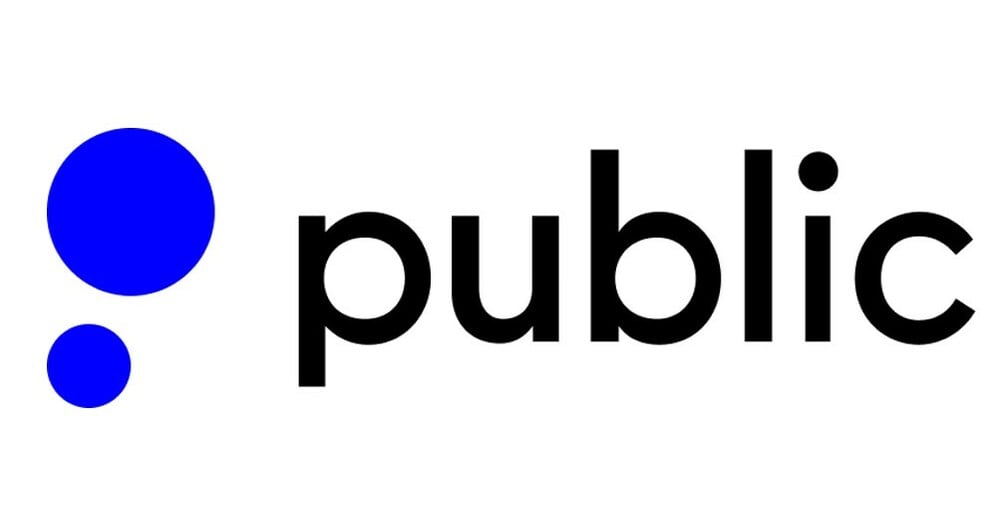Bonds vs. Stocks: A Beginner’s Guide
Stocks and bonds are two investment types. Investing in shares of a company (stocks) offers different risks, returns and behaviors than investing through loans to a corporation or government (bonds).
Many, or all, of the products featured on this page are from our advertising partners who compensate us when you take certain actions on our website or click to take an action on their website. However, this does not influence our evaluations. Our opinions are our own. Here is a list of our partners and here's how we make money.
The investing information provided on this page is for educational purposes only. NerdWallet, Inc. does not offer advisory or brokerage services, nor does it recommend or advise investors to buy or sell particular stocks, securities or other investments.
Stocks vs. bonds
The main difference between stocks and bonds is that stocks give you a small portion of a company, while bonds let you loan a company or government money. Another difference is how they make money for you: Stocks must grow in resale value so you can sell them for more than you bought them, while bonds pay you fixed interest over time. Stocks also tend to generate more money as an investment than bonds.
Stocks
Stocks represent partial ownership, or equity, in a company. When you buy stock, you’re purchasing a tiny slice of the company — one or more "shares." And the more shares you buy, the more of the company you own. Let’s say a company has a stock price of $50 per share, and you invest $2,500 (50 shares for $50 each).
Now imagine, over several years, the company consistently performs well. Because you’re a partial owner, the company’s success is also your success, and the value of your shares will grow just like the value of the company. If its stock price rises to $75 (a 50% increase), the value of your investment would rise 50% to $3,750. You could then sell those shares to another investor for a $1,250 profit.
NerdWallet rating 4.8 /5 | NerdWallet rating 4.6 /5 | NerdWallet rating 4.6 /5 |
Fees $0 per online equity trade | Fees $0 | Fees 0% - 4% varies by type of transaction; other fees may apply |
Account minimum $0 | Account minimum $0 | Account minimum $0 |
Promotion None no promotion available at this time | Promotion Earn up to $10,000 when you transfer your investment portfolio to Public. | Promotion Get $200 in crypto when you sign up. Terms Apply. |
Of course, the opposite is also true. If that company performs poorly, the value of your shares could fall below what you bought them for. In this instance, if you sold them, you’d lose money.
Stocks are also known as corporate stock, common stock, corporate shares, equity shares and equity securities. Companies may issue shares to the public for several reasons, but the most common is to raise cash that can be used to fuel future growth.
» Check out our roundup of the best online brokerages for stock trading
Bonds
Bonds are loans from you to a company or government. There’s no equity involved, nor any shares to buy. Put simply, a company or government is in debt to you when you buy a bond, and it will pay you interest on the loan for a set period, after which it will pay back the total amount you purchased the bond for.
But bonds aren’t entirely risk-free. If the company goes bankrupt during the bond period, you’ll stop receiving interest payments and may not get back your principal.
Suppose you buy a bond for $2,500, which pays 2% annual interest for 10 years. That means you’d receive $50 in interest payments annually, typically distributed evenly throughout the year. After 10 years, you would have earned $500 in interest, and you’d get back your initial investment of $2,500, too. Keeping a bond for the full duration is known as “holding until maturity.”
With bonds, you usually know what you’re signing up for, and the regular interest payments can be used as a source of predictable fixed income over long periods.
The duration of bonds depends on the type you buy, but they commonly range from a few days to 30 years. Likewise, the interest rate — known as yield — will vary depending on the type and duration of the bond.
» Learn more: What is a bond?
Comparing stocks and bonds
While both instruments seek to grow your money, the way they do it and the returns they offer are very different.
» Want to get started? Learn how to buy stocks and how to buy bonds
Equity vs. debt
When you hear someone talk about equity and debt markets, they’re typically referring to stocks and bonds. Corporations often issue equity to raise cash to expand operations, and in return, investors can benefit from the future growth and success of the company.
Buying bonds involves issuing a debt that’s repaid with interest. You won’t have any ownership stake in the company, but you’ll agree that the company or government must pay fixed interest over time and the principal amount at the end of that period.
Capital gains vs. fixed income
Stocks and bonds generate cash in different ways, too.
To make money from stocks, you’ll need to sell the company’s shares at a higher price than you paid to generate a profit or capital gain. Capital gains can be used as income or reinvested but will be taxed as long-term or short-term capital gains accordingly.
Bonds generate cash through regular interest payments such as:
Treasury bonds and Treasury notes: Every six months until maturity.
Treasury bills: Only upon maturity.
Corporate bonds: Semiannually, quarterly, monthly or at maturity.
Bonds can also be sold on the market for a capital gain, though for many conservative investors, the predictable fixed income is what’s most attractive about these instruments. Similarly, some stocks offer fixed income that more resembles debt than equity, but this usually isn’t the source of stocks’ value.
» Learn more about the different types of bonds and how to buy them
Inverse performance
Another important difference between stocks and bonds is that they tend to have an inverse relationship in terms of price — when stock prices rise, bond prices fall, and vice versa.
Historically, when stock prices rise and more people are buying to capitalize on that growth, bond prices typically fall on lower demand. Conversely, when stock prices fall, investors want to turn to traditionally lower-risk, lower-return investments such as bonds, and their demand and price tend to increase.
Bond performance is also closely tied to interest rates. For example, if you bought a bond with a 4% yield, it could become more valuable if interest rates drop because newly issued bonds would have a lower yield than yours. On the other hand, higher interest rates could mean newly issued bonds have a higher yield than yours, lowering demand for your bond (and its value).
To stimulate spending, the Federal Reserve typically cuts interest rates during economic downturns — periods that are usually worse for many stocks. But, lower interest rates can increase the value of existing bonds, reinforcing the inverse price dynamic.
But there are exceptions to this: 2022, for example, wasn't your typical year. The Fed raised interest rates to tamp down rising inflation, and both stocks and bonds did poorly.
Taxes
Since stocks and bonds generate cash differently, they are taxed differently. Bond payments are usually subject to income tax, while profits from selling stocks are subject to capital gains tax. Capital gains taxes may be lower than income taxes for investors in some income brackets.
However, bonds may come with tax benefits you might not get with stocks.
Municipal bond payments are exempt from federal income tax. Most states also exempt their own municipal bonds (but not out-of-state municipal bonds) from state income taxes.
Treasury bond payments are generally exempt from state income tax, although they are fully subject to federal income tax.
» Dive deeper. See how stocks and bonds might fit into your asset allocation.
The risks and rewards of each
Stock risks
The biggest risk of stock investments is the share value decreasing after you’ve purchased them. Stock prices fluctuate for several reasons (you can learn more about them in our stock starter guide). If a company’s performance doesn’t meet investor expectations, its stock price could fall.
Given the numerous reasons a company’s business can decline, stocks are typically riskier than bonds.
However, with that higher risk can come higher returns. The market's average annual return is about 10%, not accounting for inflation. In contrast, the U.S. bond market, measured by the Bloomberg Barclays U.S. Aggregate Bond Index, has an all-time return of around 6%, also not accounting for inflation.
Bond risks
U.S. Treasury bonds are generally more stable than stocks in the short term, but this lower risk typically translates to lower returns, as noted above. Treasury securities, such as government bonds, notes and bills, are virtually risk-free, as the U.S. government backs these instruments.
Corporate bonds, on the other hand, have widely varying levels of risk and returns. Bonds from a company with a high likelihood of going bankrupt will be considered much riskier than those from a company with a low chance of going bankrupt. Credit rating agencies such as Moody’s and Standard & Poor’s assign a credit rating that reflects the company’s ability to repay debt. Corporate bonds are classified as either investment-grade bonds or high-yield bonds.
Corporate bonds can be grouped into two categories: investment-grade bonds and high-yield bonds.
Investment grade. Higher credit rating, lower risk, lower returns.
High-yield (also called junk bonds). Lower credit rating, higher risk, higher returns.
These varying risks and returns help investors choose how much of each to invest in — otherwise known as building an investment portfolio. According to Brett Koeppel, a certified financial planner in Buffalo, New York, stocks and bonds have distinct roles that may produce the best results when they complement each other.
"As a general rule of thumb, I believe that investors seeking a higher return should do so by investing in more equities, as opposed to purchasing riskier fixed-income investments," Koeppel says. "The primary role of fixed income in a portfolio is to diversify from stocks and preserve capital, not to achieve the highest returns possible."
» Dive deeper. Learn more about fixed-income investments like bonds.
Should you buy stocks or bonds?
When it comes to stocks vs. bonds, one isn't better than the other. They serve different roles, and many investors could benefit from a mix of both in their portfolios. Diversification is an important technique for managing investment risks — and a portfolio containing a mix of stocks and bonds is more diversified and potentially safer than an all-stock portfolio.
There are many adages to help you determine how to allocate stocks and bonds in your portfolio. One says that the percentage of stocks in your portfolio should equal 100 minus your age. So, if you’re 30, such a portfolio would contain 70% stocks and 30% bonds (or other safe investments). If you’re 60, it might be 40% stocks and 60% bonds.
The core idea here makes sense: As you approach retirement age, you can protect your nest egg from wild market swings by allocating more funds to bonds and less to stocks.
However, detractors of this theory may argue this is too conservative of an approach given our longer lifespans today and the prevalence of low-cost index funds, which offer a cheap, easy form of diversification and typically less risk than individual stocks. Some argue that 110 or even 120 minus your age is a better approach today.
For most investors, stock/bond allocation comes down to risk tolerance. How much volatility are you comfortable with in the short term in exchange for stronger long-term gains?
Consider this: A portfolio comprising 100% stocks is almost twice as likely to end the year with a loss than a portfolio of 100% bonds. Considering your timeline, are you willing to weather those downturns in exchange for a higher likely return over the long term?
When debt and equity roles reverse
Certain stocks offer the fixed-income benefits of bonds, and some bonds resemble the higher-risk, higher-return nature of stocks.
Dividends and preferred stock
Large, stable companies that regularly generate high profits often issue dividend stocks. Instead of investing these profits in growth, they often distribute them among shareholders — this distribution is a dividend. Because these companies typically aren’t targeting aggressive growth, their stock price may not rise as high or as quickly as smaller companies. However, consistent dividend payouts can benefit investors looking to diversify their fixed-income assets.
Preferred stock resembles bonds even more and is considered a fixed-income investment that's generally riskier than bonds but less risky than common stock. Preferred stocks pay out dividends that are often higher than both the dividends from common stock and the interest payments from bonds.
Selling bonds
Bonds can also be sold on the market for capital gains if their value increases higher than what you paid, which could happen due to changes in interest rates, an improved rating from the credit agencies or a combination of these.
However, seeking high returns from risky bonds can defeat the purpose of investing in bonds in the first place — to diversify away from equities, preserve capital and provide a cushion for swift market drops.










